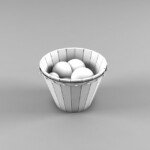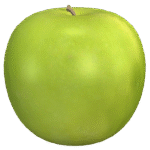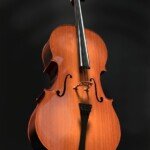Unlocking Accuracy: Your Comprehensive Guide to Browsing the World of DIY CNC Machine Suites
There is no denying the charm of creating complex, precise parts on the workbench. For amateurs, manufacturers and small workshop owners, the DIY CNC machine kit represents a portal to the fascinating world of computer-controlled machining. However, with the many options available on the market, choosing and building the right kit can feel overwhelmed. This guide cuts down on noise, from kit selection to clear paths to getting your first chip flying, while also looking forward to when your project needs more than what a DIY machine can offer.
Why consider using the DIY CNC suite?
- Cost-effective entry: Pre-built CNC machines can be expensive. The kit saves a lot of money by leveraging your time and assembly skills.
- Deep Learning: Building your own machine is the ultimate quick course for CNC basics – mechanical, electronic, software integration – knowledge is very valuable for future operations and troubleshooting.
- Custom: Although the kits offer core components, they often allow modification, upgrades and tailoring to suit your specific space and material preferences.
- Authorization and satisfaction: Successfully assembling and calibrating the machine produces great satisfaction and a deep understanding of the tool, making you a more capable operator.
Key considerations before buying
Jumping into a purchase without planning can lead to frustration. Ask yourself:
- What materials will you cut into? (Question 1)
- Balsa Wood/Soft Plastic: Smaller, lighter kit (3030 aluminum extrusion, MDF frame) will suffice.
- Hardwood/acrylic/aluminum: You need severe rigidity. Look for larger extrusion profiles (4040/4080+) or welded steel frames. Ball screws are preferable to lead screws.
- Steel/Stainless Steel: DIY Kits Usually cannot Treat obvious metals to remove ferrous metals. You need a serious industrial machine – this is where companies like Greatlight come in.
- What size of parts do you need? (Working envelope)
- Measure the largest item you envision. Remember that the advertising travel of the kit must accommodate your artifact and Tool holder. Overestimate.
- What precision do you need?
- Rough prototype or artistic wooden sign? Medium accuracy (0.1mm+) is usually acceptable.
- Functional parts, complex components or tight fit? The target kit has high accuracy components (ground ball screws, preloaded linear guide) that are able to consistently have a precision of <0.05mm (although thermal effects and machine stiffness can affect actual results).
- Budget and time investment:
- The cost of a kit is just the beginning. Factors in basic extra features: controller (if not included), spindle/router/VFD, software (some free, some paid), tools (bit!), labor (Vises, fixtures), dust collection and potentially unforeseen costs.
- Stay realistic about assembly time. This is not an afternoon project; plan multiple hours, which may be distributed over days or weeks.
Anatomical DIY CNC Kit: Key Components
Understanding core parts can help you evaluate kit quality:
- frame: backbone. Rigidity is crucial to accuracy.
- Common types: Aluminum extrusion (Versarail, OpenBuilds-modular), MDF (cheapest, least rigid), steel pipe/welded steel (very rigid, heavy, heavy, less common in kits), granite casting (rare – suppressable top layer).
- Movement system:
- Linear Guide: Supported circular rails (common), extruded V-hubs (easier to assemble), constructed linear rails (high quality stiffness and accuracy, but at a higher price).
- Driver mechanism: Lead screws (cost-effective, potential rebound) with ball screws (higher accuracy, speed, cost, reduce/eliminate rebound). There are anti-back nuts in lead screws, but a trade-off.
- Spindle: Cutting force.
- Router (e.g., Dewalt, visible): Common in kits. High RPM is suitable for wood/plastics. Loud, less precisely beat, not the spindle.
- DC brushed spindle (e.g., 775/895): Low cost option for very light work on wax, foam, cork. Insufficient serious processing capability.
- Air-cooled VFD spindle (e.g., 1.5kW -3kW): Highly recommended for serious amateurs. Water cooling is also provided. Variable speed through VFD, lower jump, quieter, better bearings.
- Stepper motor and controller:
- Stepper motor: By NEMA standard size (e.g. NEMA 17, 23, 34). Larger frames/heavier loads require higher torque motors (NEMA 23 common).
- Motor: Translate the controller signal. Quality matters (e.g., TB6600 for DM542T-better microfill, current control).
- Motion Controller: this "brain". Can be integrated with drivers (desktop CNC shield for Arduino/GRBL) or a separate professional board (SmoothStepper, Mach3 compatible board, Ethernet controller).
- Software (CNC stack):
- CAD: Design parts (Freecad, Fusion 360 [Hobbyist]solid work, etc.).
- CAM: Convert CAD models to machine-specific G-code tool paths (Fusion 360 CAM, Meshcam, Vcarve, Freemill).
- Control software: Run on PC and send G-code commands to controller (UGS/CNCJ, OpenBuilds Control, MACH4, LinuxCNC). Some controllers run G code directly.
Assembly process: Patience and precision
- Read the manual (thorough!) Then read again. Watch manufacturer/supplier/community building videos.
- organize: Tag parts, group hardware. Keep the fasteners carefully sorted.
- Clean workspace: Make sure you have enough space and a clean, flat reference surface.
- Step by step: Hurry leads to misalignment and frustration.
- Focus on squares and lead: Continuously use precise squares and calipers to check frame alignment. This is crucial for machine accuracy.
- Carefully wired: Follow the diagram accurately. Secure the wires neatly to prevent stealing. Good cable management is safety and reliability.
- Initial calibration: The exact setting of steps for each axis is a non-tradable first step.
- Strict test before cutting: Run air cutting (no material), check motor direction, limit, speed and feed. Critical measurement results.
Embrace learning curves and limitations
Even a well-designed DIY CNC kit has limitations:
- Material constraints: Cutting speed and achievable detail/deep decline in hard materials are limited.
- Machine Deflection: Under load, the frame and components will be bent, affecting the finish and tool life.
- Vibration and resonance: Impacts the quality of completion.
- Thermal stability: Not critical for wood, but long-term metal work may experience drift.
- Complex geometric shapes: 3-axis limit cut. Simultaneous 5-axis machining is beyond the scope of DIY.
When your work goes beyond the kit: Professional solutions
This is a natural progress. When you need it:
- Hardened steel, titanium, exotic alloys
- Parts require accuracy and repeatability of low-light grades
- Complex geometric shapes require 5 axes to be processed simultaneously
- Production operation or mission-critical components
- The surface above is directly removed from the machine
…You have entered the field of professional CNC processing services. This is Great shine.
Why Greatlight CNC machining will change your project:
Greglime is not only another machinery workshop. We specialize in research High-precision five-axis CNC machiningequipped with state-of-the-art technical and engineering expertise. We know accuracy because we build incredibly accurate machines ourselves and understand the challenges you overcome with DIY settings.
We provide:
- Advanced 5-axis functions: Complex contours, deep cavity, complex undercuts, composite angles – effectively done in a single setup. This means tolerance and superior geometric fidelity compared to multiple fixation on 3-axis machines.
- Final rigidity and precision: Our industrial grade machines are designed for relentless metal disassembly. Vibration suppresses the base, high torque spindle, heats the coolant tank for thermal stability – converts to unparalleled dimensional accuracy and surface surfaces that you can’t achieve DIY.
- Material mastery: aluminum? steel? Rust-proof? titanium? brass? copper? High temperature alloy? We process them every day. We understand the specific cutting strategies for metallurgy and each material requirement.
- No sacrifice speed: Leveraging powerful machines and optimized tool paths, we offer customized precision parts faster than you expect.
- A true one-stop solution: In addition to machining, we offer comprehensive finishing – from anodizing and plating to heat treatment, polishing, painting and custom packaging.
- Engineering Solutions: Bring us your most challenging designs. Our engineers work together to solve manufacturing problems, optimize manufacturability and ensure success.
Conclusion: Start DIY, professional scale
Launching the DIY CNC suite building is a meaningful journey that develops valuable skills and unleashes great creativity. This is the perfect entry point for precision manufacturing. During the assembly process, treat it with clear goals, careful planning and patience. Understand its abilities and accept its limitations.
But be aware that your ambition as a creator or innovator is not limited by desktops. When your project requires stricter tolerances, tougher materials, more complex geometry, or production-level reliability, Greglight CNC machining Be prepared to be your companion. We bridge the gap between passionate production and industrial-grade precision. Transform your design from an ambitious concept to a high-performance reality.
Ready to surpass the bench? Customize your precision parts at the best price with Greatlight’s expert 5-axis CNC machining service! [Link to GreatLight Service Page/Quote Request]
DIY CNC Machine Kit Guide: FAQ Section
Q1: What is the easiest DIY CNC kit for absolute beginners?
A: Kits based on aluminum extrusion profiles (such as open material design using V-Slot) and equipped with basic tools and designed for lightweight wood/foam/plastic designs, are often initially friendly. Looking for a suite with very clear, step-by-step instructions and strong community support (forums, build logs).
Question 2: How much entry-level CNC kit should I expect to cut aluminum?
A: Reliably cut thin aluminum or soft alloys, hope to invest At least $1,500-$2,500 For related kit components (frame, track, screw, motor), plus $200-$500 For basic quality air-cooled VFD spindle kit (approximately 1.5kW), Another $200-$500 For controllers (such as integrated GRBL boards or separate controllers and drivers), dedicated power supplies, basic labor and terminal mills. Don’t forget the cost potential of software. Machines that truly work in a consistent aluminum are often pushed to the top end.
Q3: Can the DIY CNC kit actually cut steel?
Answer: Short answer: No, it is not effective or safe. Achieving meaningful metal removal on steel requires extreme rigidity, obvious spindle power (much more torque than aluminum is required), professional tools, flood coolant and a robust workforce that go far beyond the typical DIY kit features. Trying steel on a DIY machine can damage the tool, poor surface effect, machine damage, and potential safety hazards. For steel parts, Professional CNC services like Greatlight are the definite solutions.
Q4: Which software can I use for free with my DIY CNC?
A: You can build a fully functional stack using free software:
- CAD: freecad
- CAM: Freemill (Limited), Fusion 360 (license includes CAD/CAM/free startup for enthusiasts – Check the current terms), pycam, estlcam (limited free).
- Controller: UGS (Generic Gcode Sender – Used with GRBL), CNCJS, LinuxCNC (Controller runs on a dedicated PC, powerful but more complex setup). The OpenBuilds control is also free.
Question 5: Is it cheaper to build my own CNC kits than to buy pre-made machines?
one: Almost always, yes. However, savings come at the expense of a lot of time investment. Pre-built offers convenience, may result in better calibration, warranty support, and generally better initial performance/rigidity. If you value time more than money or lack confidence, a pre-made machine may be worth it. Well designed DIY machines able Competitors have similar prices.
Q6: How much dust collection is in CNC machines?
one: Extremely critical. CNC routing, especially wood or composites, can cause dangerous dust to your health (respiratory problems) and The life of the machine (harmful bearings, motors, electronics). Even for metals (fog-making), extraction is crucial. Invest in proper dust shoes and vacuum/extraction to get fine dust forward Your first cut.
Q7: What are the main differences between 3-axis and 5-axis CNC?
answer: * 3 Axis: The cutting tool moves linearly along X, Y, and Z. Great for parts where all functions can be accessed from the top (e.g. plaques, simple stents). Multiple settings/reinstallation of complex sides are required.
- 5 axis: The tool moves with x,y,z add It can be tilted and rotated (A and B/C axes) At the same time. This makes it possible to process incredibly complex shapes (propellers, impellers, orthopedic implants, complex molds) in a single setup. It minimizes fixtures, reduces errors, improves access to deep cavity, and achieves unparalleled accuracy on free form surfaces – this Advanced features Greatlight are specialized in research.
Question 8: I have a complex design for metal parts. Can Greglight reference it?
Answer: Absolutely! Complex geometries that require precise machining, especially those that require 5-axis functionality at the same time – are our core expertise. Visit the Greatlight website, upload your CAD files (Step, STP, IGS, SLDPRT, DWG), provide your materials and quantity specifications, and our engineering team will quickly provide competitive quotes as well as any manufacturing insights. We thrived on the challenges!

















